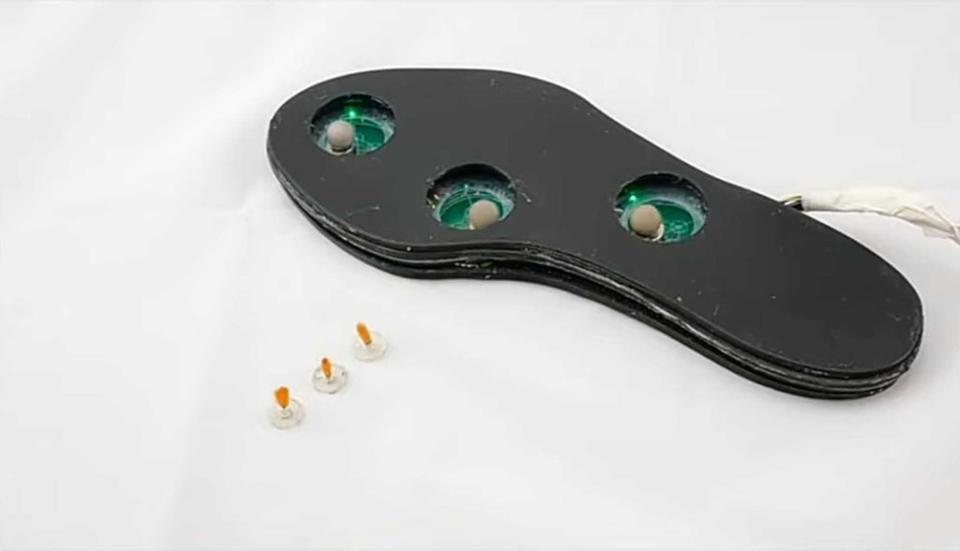Foot-tickling device inserted into shoes induces ‘uncontrollable laughter’ to help tackle stress

A foot-tickling device that induces “uncontrolled laughter” has been created by scientists with the hope that it can help wearers to relieve stress.
The device – named TickleFoot – is inserted as an insole into shoes and is battery-operated, with three active points optimised to stimulate the most tickle-sensitive spots on the sole of the foot, according to the researchers.
Scientists, including those from the University of Auckland in New Zealand, said the device creates tickle sensations using magnet-driven brushes and could serve as a stress reliever by inducing “uncontrolled laughter”.
In a study recently published in the journal Transactions on Computer-Human Interaction, they identified the most ticklish locations of the foot’s sole and stimulation patterns that can evoke laughter.
Then in a follow-up experiment, the researchers confirmed the identified stimuli could evoke laughter.
In the research, participants evaluated the level of ticklishness they felt on a seven-point scale as a single brush was moved to different locations.
“From the participants’ feedback, we derived several applications that such a simulation could be useful,” scientists wrote in the study.
The small sample-size study of 13 participants – seven women and six men – also shed light on gender variations of the most ticklish spots on the foot.
Scientists said women’s highest tickle score came from the centre of the arch of their feet, while men found areas slightly closer to the toes most ticklish.
Based on feedback from the study’s participants, researchers embedded the actuators into a flexible insole.
The device, the authors stated, has batteries that can last for about 60 minutes and can be turned on and off remotely.
It remains to be seen if the device can produce the desired effect more widely since previous research has shown people need to be in a positive state of mind to induce laughter from tickling.
“Although several tickling artifacts have been suggested in prior work, limited knowledge is available if those artifacts could evoke laughter,” scientists wrote in the study.
“We aim at filling this gap by designing and developing a novel foot-tickling mechanism that can evoke laughter,” they added.

 Yahoo Finance
Yahoo Finance 